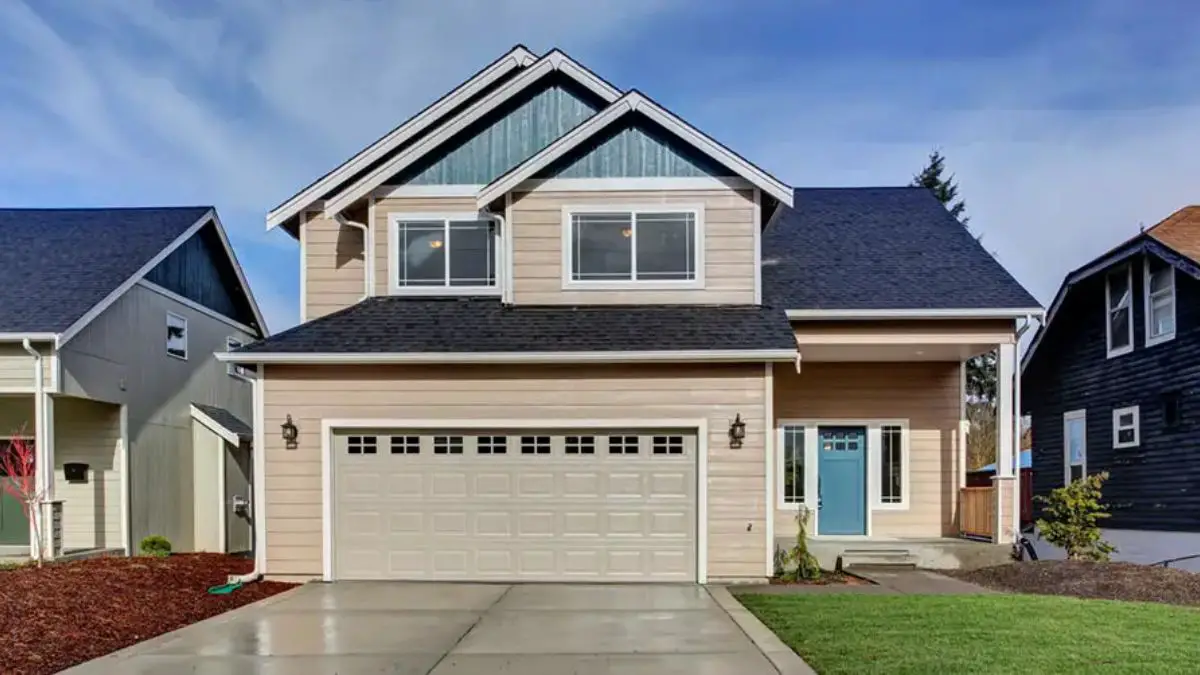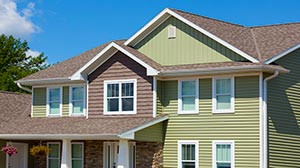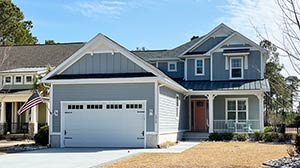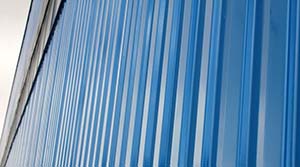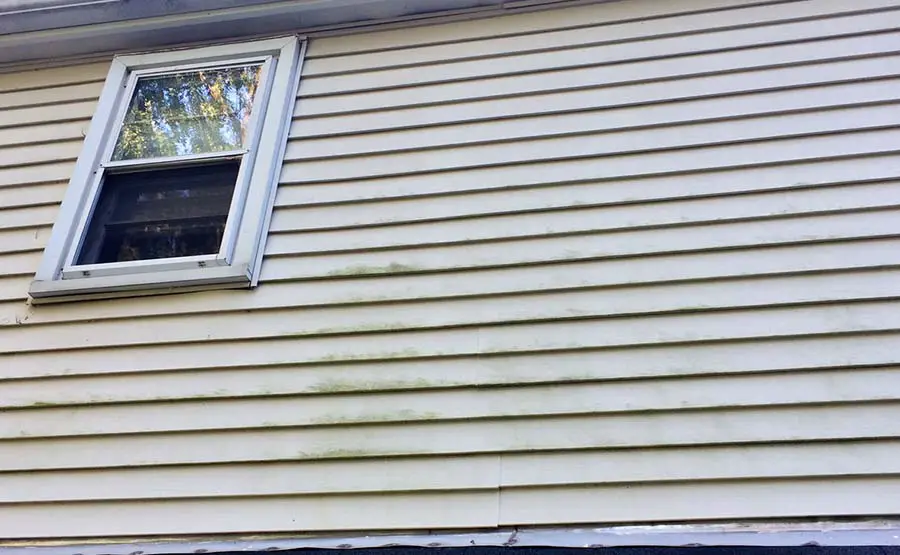
Vinyl siding is known for its durability and affordability, making it a popular choice for homeowners. Vinyl is an excellent house siding choice. However, it can be prone to rippling, bubbling, and warping. But the good news is, you can avoid these issues most of the time if you know what causes them.
Generally, vinyl siding develops ripples, bubbles, or warps due to mistakes during the installation process. Natural causes such as earthquakes, weather, extreme temperatures, and pests can damage your vinyl house siding. Low-quality cheap vinyl siding is more prone to this behavior as well.
If you understand the reasons behind these conditions, keeping your vinyl siding in good repair is easy. Let’s explore some of them.
Why Your Vinyl Siding Ripples, Bubbles, or Warps
Here are nine common reasons why vinyl siding ripples, bubbles, or warps:
1. Improper Installation
Improper installation is the number one cause of rippling, bubbling, and warping in vinyl siding.
Vinyl siding is designed to hang relatively loosely from the wall. If the siding is nailed too tightly to the building, it will cause bulging. The heads of the nails should not be touching the nailing hem.
You can test whether or not your siding has been attached too tightly by choosing a panel and seeing if it slides side to side. It should move about ¼ to ½ inch either way.
2. Exposure to Excessive Sunlight
Vinyl siding is essentially plastic, so it is prone to melting. It can gain exposure to excessive heat in a few different ways. The resulting bubbling and rippling can be made worse by cold winters, which will cause the condition to worsen with repeated contraction and expansion.
Direct sunlight can melt or warp vinyl siding in a hot climate or during the summer months. Walls that get afternoon exposure to direct sunlight will be more likely to bubble or warp. Lower quality or darkly painted vinyl is more susceptible to this damage than a higher quality or a lighter colored product.
3. Proximity to Outdoor Appliances
Be sure to leave enough space when you place items such as BBQs or gas fire pits next to your house. These items will cause localized bubbling and rippling on your vinyl siding if they are too close, even after just one occasion of use. It is best to keep your BBQs at least 10 feet away from your house while in use.
4. Neighboring Windows
Although it may seem unlikely, your neighbor’s low-UV windows may also be the culprit behind any damage to your vinyl siding. The sun will reflect off your neighbor’s windows and can melt your siding.
5. Dark Paint Colors
Darker shades naturally absorb more heat from the sun than do lighter shades. Most vinyl siding comes from the manufacturer in an appropriate, lighter shade that will not attract more heat than is necessary.
If the panels are painted a darker shade after purchase, heat will become trapped underneath the vinyl, resulting in warping, rippling, or bubbling.
6. Water Leaks
Despite vinyl being an effective barrier against moisture, leaks can and do still happen. Most of the time, leaks result from an error during installation. If you put in a nail too tightly, the siding may crack.
You may first notice tell-tale signs of water leakage on the interior of your home. Damage to inside paint or wall coverings is a good indicator of moisture creeping in from the outside. You may also notice mold accumulating inside your house.
Your flashing may also be the entry point for moisture, causing your siding to warp or buckle. If flashing around windows, dormers, or doors is not installed correctly, water can find an entry point and make its way behind your siding—the same holds for chimneys and future damage to your roof.
7. Insects and Rodents
Unwanted guests such as insects and rodents can also cause damage to your vinyl siding. Once they find a way under the siding, they build nests and multiply, often eating away at the underlying structure. This can cause warping and even loose panels.
8. Shifting Foundation
Foundation movement is most common in older dwellings and can affect your siding minimally or quite significantly. Buckled or bulging siding is typical on buildings that have experienced movement. Warped or otherwise displaced siding can cause significant concern as it may be a sign of structural damage.
9. Poor Quality Siding
The old saying “you get what you pay for” holds very true for vinyl siding. Even before installation, if your siding is on the thin side, it may already have experienced some waving, rippling, or other defects.
Be sure to research any siding products you are considering before purchasing. Replacing your siding after a year or a season is something you will want to avoid.
Can You Fix Warped Vinyl Siding?
In a word, no. You cannot fix warped vinyl siding once it is damaged. The same applies to bubbles and ripples.
If you notice your vinyl siding has warped, it is essential to address the issue right away. It is bad to leave the problem unresolved as warping can allow pests and moisture under your siding where severe and costly damage can occur. Once the panel is damaged, you cannot manipulate it back to its original state. The only solution for warped siding is to replace it.
The one advantage of the loose manner installation of vinyl siding is that you can replace a single panel without removing or damaging additional panels. If possible, it is always advisable to hang on to any extra siding panels during the installation. They will come in handy if you need to replace a panel in the future.
Choose your product wisely if you need to purchase new siding to replace a more extensive section of your old siding. Invest in a good quality siding in a lighter shade that will reflect heat.
Avoid painting your new siding, and be sure that you install it correctly. If you live in an area with environmental extremes, consider a different type of siding such as wood or steel.
How Do You Identify and Prevent Issues with Your Vinyl Siding?
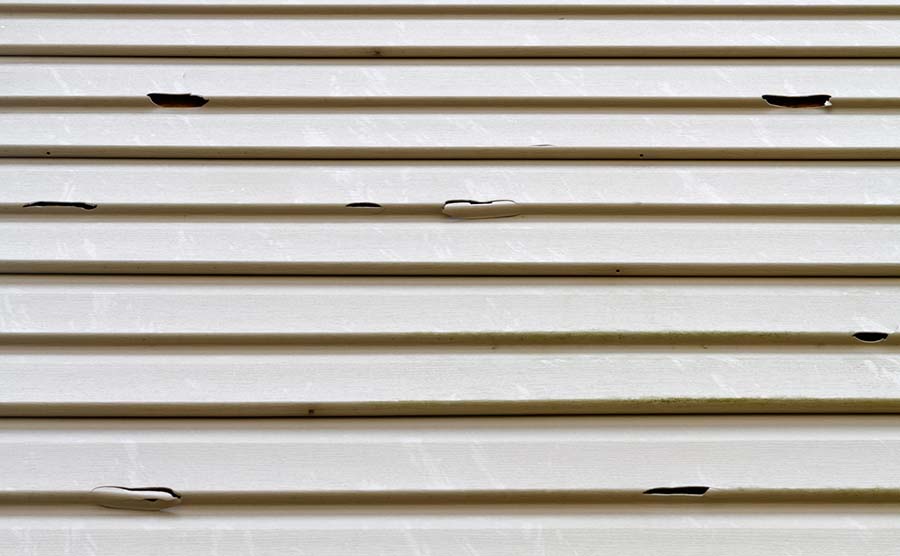
If you are purchasing vinyl siding for your house, be sure to select a quality product in a lighter shade that won’t attract and absorb the sun’s rays. If you must paint your siding, choose a color that is not darker than the manufacturer’s shade. The best way to avoid future issues with your siding is to hire a professional to hang it.
Siding must be hung in a specific manner so that there is enough room for the panels to allow expansion and contraction. If a panel is attached too tightly, you risk cracking or buckling and inevitably leakage.
If you’ve already installed your siding, the most effective way to avoid your vinyl siding rippling, bubbling, or warping is to identify and take steps to prevent potential problems before they start.
Once you have identified a problem in one area of your siding, it is safe to assume that the issue will spread to other sites. It is best to replace the damaged panels as soon as possible.
Performing regular inspections of your siding will go a long way in discovering any areas of concern. Here is a list of what you should look for:
- Melted spots
- Warped areas
- Panels that are loose or coming off the wall
- Bulging panels
- Watermarks
- Mold
- Vertical lines along the seams
- Cracks
- Gaps or holes
- Chalky texture on the surface
- Exposed screws or nails
- BBQs or fire tables that are too close
By ensuring that nothing in the above list is happening with your siding, pests will not find their way in, moisture will not cause damage, and the sun will not wreak havoc on your vinyl siding.
If your neighbor’s low UV windows are causing your vinyl siding to ripple or bubble, you could do 1 of 2 things:
- Approach your neighbor about putting screens over their windows to cut down on the reflection. You can address any concerns they may have about drilling into their window sash by recommending double-sided tape as a way to attach a screen to the outside of their window.
- Use plants to shield your windows. The other option is to plant greenery that will act as a barrier for your windows. Some quick-growing shrubs or bushes may solve your problem and add to the aesthetic of your exterior.
When Should You Replace Your Vinyl Siding?
Here are five significant signs that indicate your vinyl siding needs replacing.
1. Rotting
Rot usually begins with the wood under the siding. If water has found its way under the siding, mold and fungus can grow and later cause dry rot to the furring strips, wood sheathing, and eventually the siding itself.
If you can’t easily see any rot, look at areas that may be prone to leaking. You can use a screwdriver or other long object to poke and pry the site to see any give in the material.
Try gently pulling on the siding; if there is rot underneath, it will probably come off the wall quite easily.
2. Moisture Inside Your House
If you see any peeling or bubbling in your plaster, paint, or wallpaper in your house, you may have moisture coming in from under your siding. This is a severe problem that you should address as soon as possible as the moisture can cause mold to grow in and on your walls.
To find out if your interior leaks are coming from your siding, inspect your exterior for signs of mold. If you’re unsure about weak spots where moisture may be entering your house, it is best to bring a contractor in to assess the situation. They may remove some of the sidings and will be able to tell what you need to replace.
3. Loose or Broken Siding Panels
If your panels are loose or broken, it is time to replace them.
Depending on how many of your panels are in disrepair, you may only need to replace a few of them, or you may need to replace all of your sidings.
If a panel is not hanging where it should be or is cracked or broken, it will create an opportunity for water and moisture to gain access to your walls.
4. Warping or Bulging
Warping and bulging are signs that you need to replace your siding panels. Caused by poor installation, extreme heat or sun exposure, or moisture damage, warping and bulging will only worsen over time.
Depending on the severity of the problem, you may want to consider consulting with a professional about when you should replace your siding.
5. Holes in the Siding
Most often caused by critters and insects seeking shelter and food, holes in your siding are something that you should address promptly.
If you are unfortunate enough to have carpenter ants or termites penetrate under your siding, you will want to have the siding removed and replaced as soon as possible. These insects can cause major structural damage to your home, resulting in extensive and expensive repairs.
Larger animals like birds, chipmunks, and squirrels often try to access buildings through the gutters. Damage to gutters can lead to siding damage as well.
Advantages of Replacing Your Vinyl Siding

Although replacing your siding can seem daunting in terms of cost and time, the rewards are great.
Once you have brand new, properly installed siding on your house, you no longer have to worry about maintenance. You can have confidence that the job was done right, and you can enjoy your new, fade-proof siding for years to come.
Another big perk of replacing your siding is the savings you will enjoy on your energy costs. There will be less temperature fluctuation in your house as your furnace or a/c won’t have to work as hard to maintain a steady temperature.
What to Look for When Buying Vinyl Siding?
To ensure that you are purchasing a good quality vinyl siding, be sure to look for the following attributes:
- Siding panels should be a minimum thickness of .040 inches, .042 – .045 inches are recommended. The American Society Testing Materials (ASTM) minimum standard requirement is only .035 inches.
- Vinyl siding should meet the general minimum standard 3679 designation. The packaging should indicate what the standard of your product is.
- Durability is an important characteristic to look for in vinyl siding. Search out a siding manufacturer that produces a product that can withstand extreme temperatures and high winds. Ask your dealer for a product that has anti-weathering protection, such as titanium oxide.
- Look for siding that comes with a robust warranty plan. The best warranties offer lifetime coverage and can even be transferable to subsequent home owners. Fifty years is the standard warranty for vinyl siding and may or may not include labor for any replacements needed. Warranties should include protection against fading. Some manufacturers may also only offer to recoat your damaged siding and not replace it.
Final Thoughts
When you install good-quality vinyl siding correctly, the result will be a durable, long-lasting exterior requiring little maintenance.
Avoiding issues like rippling, bubbling, and warping is easy when you select a good quality product in a light shade and have it installed by a professional.


